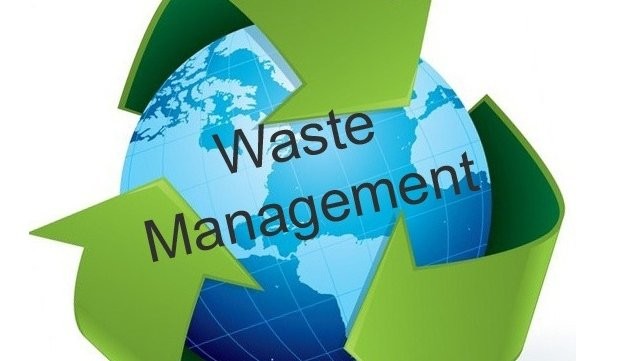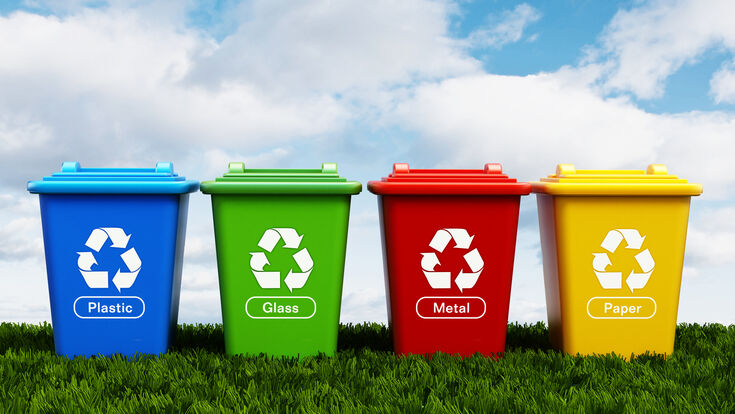The Duty of Recycling Lives Services in Sustaining Local Neighborhoods
The Duty of Recycling Lives Services in Sustaining Local Neighborhoods
Blog Article
Checking Out Different Kinds Of Waste in Modern Waste Administration Equipment
The modern landscape of waste administration entails navigating a complicated selection of waste types, each needing specialized handling and disposal approaches to alleviate ecological impacts. Community strong waste, unsafe waste, digital waste, and organic waste each present distinct difficulties and chances for source recuperation. Cutting-edge solutions such as smart waste containers and waste-to-energy technologies are emerging as vital tools in improving efficiency and sustainability. Understanding these waste types is important for fostering public understanding and motivating energetic involvement in sustainable practices. What strategies can successfully attend to these different kinds of waste while promoting a circular economic situation?
Municipal Strong Waste
Community strong waste, commonly described as family trash or garbage, encompasses a selection of thrown out materials created by property, commercial, and institutional sources within a town. This waste stream generally consists of products such as packaging, food scraps, yard trimmings, paper, plastics, fabrics, and discarded household goods. The administration of community strong waste is a vital component of urban preparation and public wellness, requiring reliable collection, transport, and disposal systems.
Efficient waste administration systems are created to lessen environmental effect while taking full advantage of resource recuperation. Composting organic waste, such as food scraps and yard trimmings, not just lowers landfill usage but also generates important dirt modifications.
Municipalities need to additionally resolve the logistical and financial difficulties connected with waste management. Implementing pay-as-you-throw systems, improving public recognition, and investing in innovation can substantially boost waste diversion rates. By integrating these practices, communities can cultivate sustainable areas, decrease greenhouse gas exhausts, and save natural deposits.
Contaminated Materials

Effective hazardous waste management includes several critical actions: identification, disposal, partition, and therapy. Segregation guarantees that hazardous products are saved separately from non-hazardous waste to stop cross-contamination.
Regulative frameworks, such as the Resource Conservation and Recovery Act (RCRA) in the USA, give standards and criteria for contaminated materials management. Adherence to these guidelines, combined with advancements in waste therapy technologies, is necessary in minimizing the risks connected with contaminated materials.
Digital Waste
Electronic waste, generally described as e-waste, represents a quickly growing difficulty in waste administration systems around the world. This sort of waste encompasses discarded electronic gadgets and devices such as mobile phones, computers, televisions, and various other digital home appliances. The rapid speed of technological advancement, coupled with reducing item life expectancies and customer demand for the current tools, has tremendously boosted the quantity of e-waste produced yearly.
E-waste is particularly bothersome as a result of its complicated make-up, frequently consisting of dangerous substances like mercury, lead, and cadmium, which position substantial ecological and health threats if not effectively taken care of. Alternatively, e-waste additionally includes valuable materials such as silver, copper, and gold, which can be recouped and reused. The dual nature of e-waste-- both beneficial and dangerous-- demands specialized handling, reusing, and disposal processes.
Reliable e-waste management includes strict regulative frameworks, robust collection systems, and advanced recycling modern technologies. Public awareness and engagement are crucial, Resources as improper disposal methods, such as illegal dumping and casual recycling, aggravate ecological contamination and health and wellness threats. Subsequently, improving e-waste management practices is crucial for minimizing ecological effect and recuperating important sources in a significantly electronic globe.

Organic Waste
Organic waste, comprising cooking area scraps, yard trimmings, and agricultural deposits, represents a considerable section of the worldwide waste stream. This type of waste is eco-friendly, suggesting it can be broken down by microbes into less complex organic substances. Despite its capacity for natural decay, incorrect monitoring of organic waste can bring about unfavorable ecological impacts, consisting of the emission of greenhouse gases such as methane, which add to climate modification.
Effective administration of natural waste is essential for reducing these environmental influences (recycling lives services). Composting is a commonly taken on approach, transforming natural waste into nutrient-rich compost that can boost dirt health and wellness and farming productivity. Furthermore, anaerobic food digestion is an emerging technology that converts natural waste right into biogas, a renewable resource source, and digestate, which can be used as plant food
Municipalities and waste administration entities have to execute robust organic waste collection and therapy programs to make the most of the advantages of these procedures. Public education and learning projects can additionally play a pivotal role in encouraging homes and services to different natural waste from various other sorts of waste. By focusing on the monitoring of natural waste, cultures can minimize land fill use, lower greenhouse gas discharges, and create important by-products for farming usage.

Ingenious Waste Management
In the world of waste monitoring, cutting-edge methods are changing just how cultures manage their refuse, intending for sustainability and performance. see this These advancements include a series of innovations and methods that improve reusing prices, lower landfill dependency, and lower ecological influence. One popular advancement is the application of clever waste containers equipped with sensors that keep track of fill levels and optimize collection courses. This not just lowers gas intake yet additionally lessens greenhouse gas exhausts.
One more remarkable development is the adoption of waste-to-energy (WtE) innovations. By transforming non-recyclable waste right into functional power via procedures such as incineration and anaerobic food digestion, WtE minimizes garbage dump concern and offers a sustainable energy source. Advancements in chemical recycling permit for the malfunction of complicated plastics into their initial monomers, enabling the development of new, high-grade plastic products.
In addition, the circular economic situation model is getting traction, highlighting the design of products and systems that focus on reusability and resource effectiveness. This all natural method urges industries to decrease waste generation from the outset. Via these innovative strategies, contemporary waste management systems are not just resolving the instant challenges of garbage disposal however likewise leading the way for a much more lasting future.
Verdict
A detailed understanding of municipal solid waste, contaminated materials, digital waste, and natural waste, coupled with the execution of ingenious waste monitoring options, is critical for alleviating ecological influences. Integrating technologies such as wise waste bins and waste-to-energy systems can enhance performance and sustainability. Effective waste management techniques not just foster source recovery however additionally promote public recognition and participation, eventually adding to the growth of a round economic situation.
The modern landscape of waste monitoring entails browsing a complex range of waste types, each needing specialized handling and disposal techniques to minimize ecological impacts. Municipal solid waste, unsafe waste, electronic waste, and natural waste each present distinctive difficulties and chances for resource healing.Electronic waste, generally referred to as e-waste, stands for a rapidly expanding obstacle in waste management systems worldwide. Through these cutting-edge approaches, modern-day waste monitoring systems are not just resolving the instant challenges of waste disposal that site but additionally leading the method for a much more sustainable future.
A thorough understanding of local solid waste, hazardous waste, electronic waste, and natural waste, combined with the implementation of cutting-edge waste administration solutions, is critical for mitigating environmental influences. (recycling lives services)
Report this page